







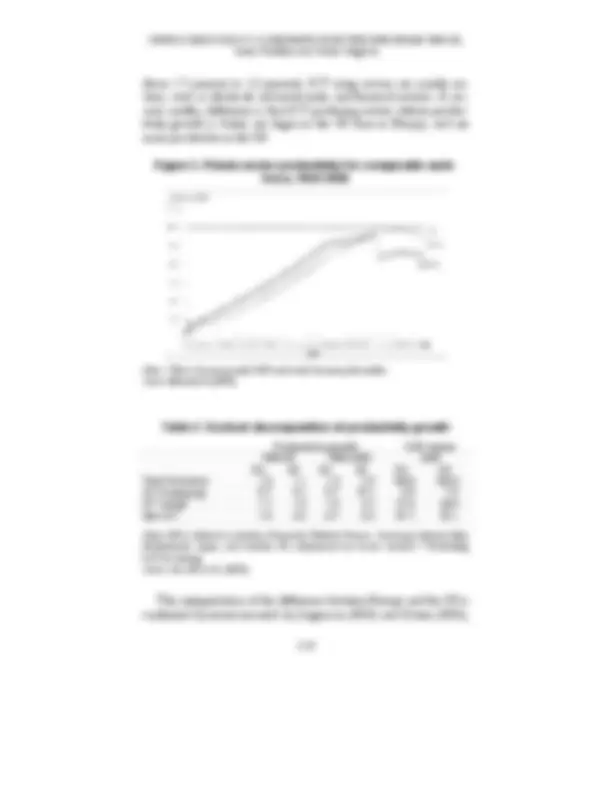
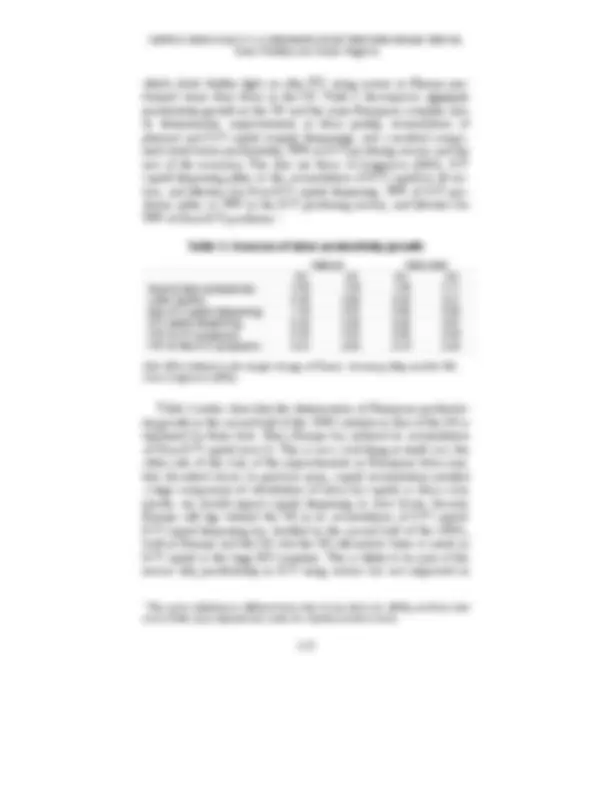




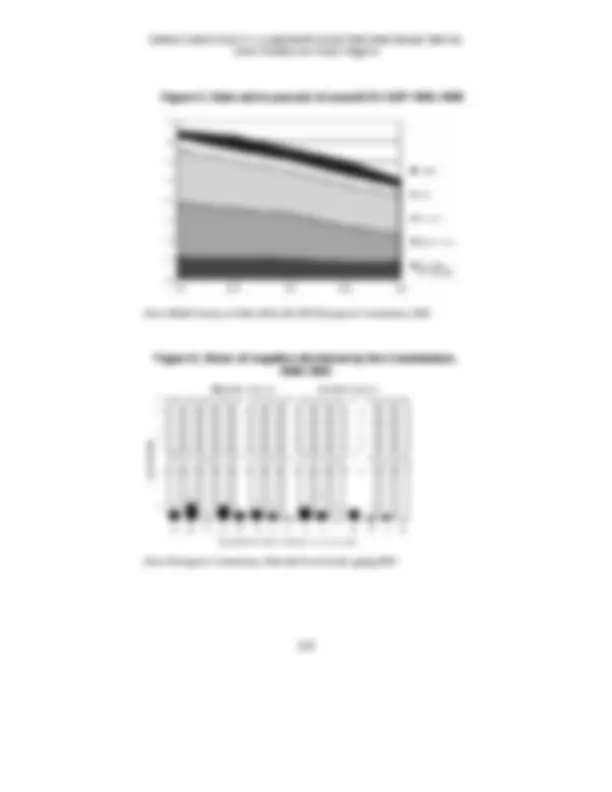



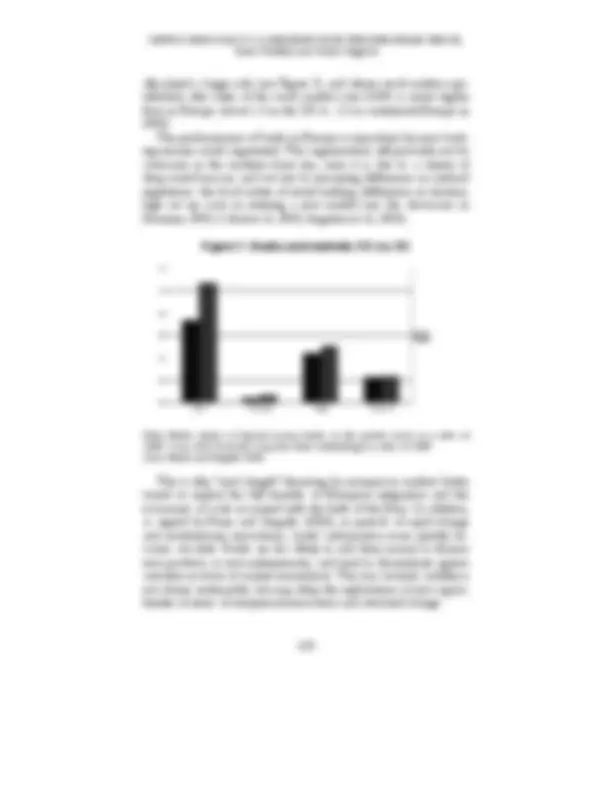
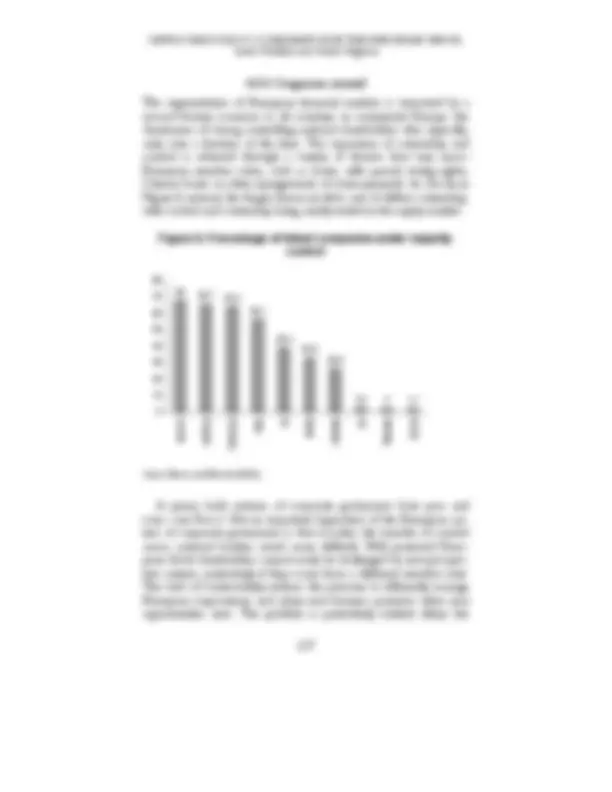



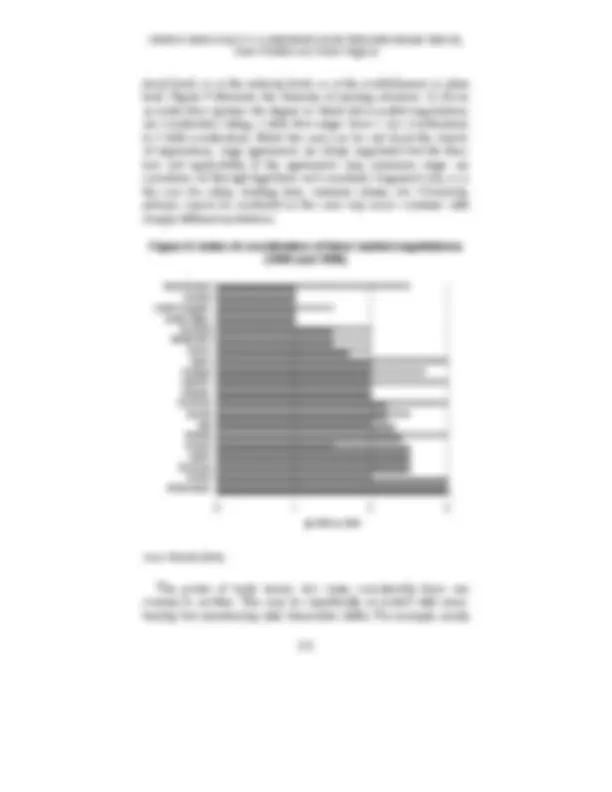




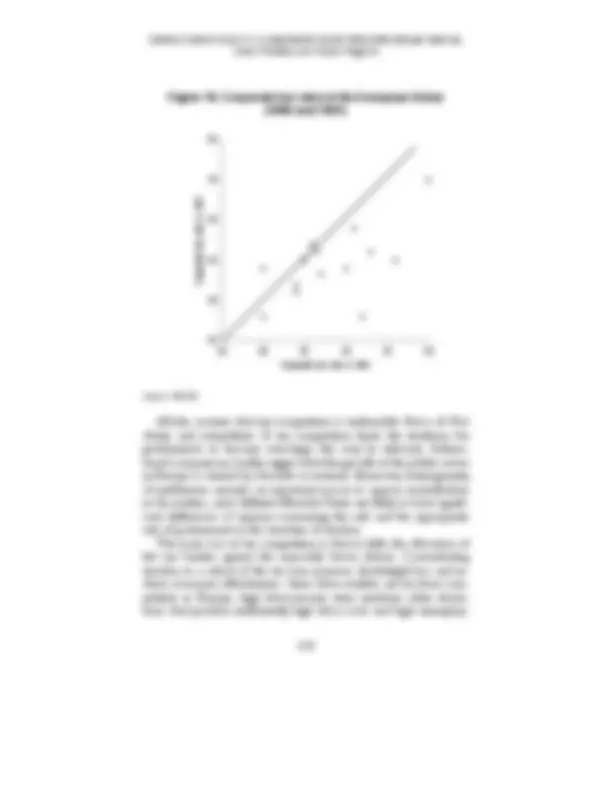























Study with the several resources on Docsity

Earn points by helping other students or get them with a premium plan


Prepare for your exams
Study with the several resources on Docsity

Earn points to download
Earn points by helping other students or get them with a premium plan
Community
Ask the community for help and clear up your study doubts
Discover the best universities in your country according to Docsity users
Free resources
Download our free guides on studying techniques, anxiety management strategies, and thesis advice from Docsity tutors
The centralization of monetary policy and the limitations of fiscal policies in the European Union (EU), focusing on supply-side policies. The authors argue that countries benefit from each other's supply-side reforms through policy coordination, which is justified due to market failures and the need for legislation and regulations. labor markets, competition policy, taxation, research and education, and the implications for various markets and knowledge acquisition. It also suggests that soft policy coordination and competition among European countries can lead to improvements.
What you will learn
Typology: Lecture notes
1 / 57

This page cannot be seen from the preview
Don't miss anything!


















































SWEDISH ECONOMIC POLICY REVIEW 13 (2006) 101-
Europe’s overall economic performance has been depressing for more than a decade. The reasons are well known, as are the solutions. The problem lies squarely with the supply side. While some countries have been able to undertake the necessary reforms, others have not. Can the solution come from outside, through more centralization, formal or informal, at the EU level of government? Our answer is negative. Centralization works by exploiting externalities and increas- ing returns, but it cannot substitute for domestic policy failures. With few exceptions, chiefly research and higher education, the supply side displays no significant externalities and no increasing returns. Is the Open Method of Coordination, which lies at the heart of the Lisbon strategy, an alternative to centralization? Here again, our an- swer is negative. We view the strategy as misguided in its ambitions, muddled in its endless list of priorities, undercut by the illusory preci- sion of its quantitative targets, and flawed in its reliance on improb- able peer pressure. We make three main proposals. First, in order to complete the sin- gle market, held up by powerful interest groups, we suggest increasing the powers of the Commission or, preferably setting up independent agencies. Second, in those countries where the labor markets need politically difficult reforms, we recommend that national parliaments be required to debate the conclusions of European Council meetings. Third, to overcome Europe’s scientific innovation failures, we pro- pose that the EU’s research budget be primarily used to provide matching grants for setting up new universities and research centers.
JEL classification : E61, H73, H Key words : Union, policy coordination, fiscal federalism, supply-side policies.
* Guido Tabellini is Professor of Economics at Bocconi University and fellow of CEPR, Ces-Ifo and CIAR. Charles Wyplosz is Professor of Economics at the Graduate Institute of International Studies, Geneva and fellow of CEPR.
Guido Tabellini and Charles Wyplosz
Heads of States and Governments—sometimes referred to as a “naming and shaming” exercise. The Lisbon strategy does not include any other obligation than producing the annual action plans. This half-way procedure may be seen as the diplomatic outcome of conflicting views between “federalists” and “nationalists”, in and out of government. The former see an increasing degree of coordination as desirable per se , irrespective of the economic logic, on the way to “an ever closer union”. The latter oppose further integrative steps, also irrespective of the economic logic, as they want to protect na- tional prerogatives against what they perceive as relentless pressure to undermine the Nation-State. Alternatively, the OMC can also be seen as a flexible approach to coordination in areas where the case for centralization is weak, yet present. This is the pragmatic approach followed in the present re- port. Our main purpose is to evaluate whether the need for supply- side coordination is warranted and, where it is, to ask whether the Lis- bon Strategy offers an efficient framework. A large literature now deals with the coordination of aggregate demand policies. This paper focuses exclusively on the supply side.^1 Thus, we do not discuss the question of whether the framework for coordinating aggregate demand policies, and in particular the Stability and Growth Pact, needs to be reconsidered. Nor do we examine the link between demand and supply-side policies. A widely held opinion maintains that expansionary demand-side policies are needed to en- courage supply-side reforms, because such reforms are more likely to be implemented in good times. In fact, this opinion is contradicted by the evidence. Looking at the last 15 years, Boeri (2003) concludes that reforms enacted when growth exceeds 2 percent per year often in- creased the generosity of welfare systems or the protection of labor market insiders, rather than the other way around. Radical and un- popular reforms are always difficult, but sometimes they occur also because negative economic circumstances create a sense of urgency and increase the awareness that something has to give. In the next section, we present our guiding principles, inspired by the theory of fiscal federalism. Section 3 describes the supply-side challenges faced by the EU, all of which have now been clearly identi- fied. Section 4 contains the policy analysis, discussing the role of
(^1) Other recent papers with a similar purpose include Begg (2005) and Alesina, An- geloni and Schuknecht (2005).
Guido Tabellini and Charles Wyplosz
Europe with regard to labor markets, competition policy and the sin- gle market, taxation, and policies towards research and education. Section 5 then examines the Lisbon Strategy and the associated Open Method of Coordination, a potentially interesting half-way between formal coordination and full decentralization. While the strategy is clearly not delivering, it can be improved, and some proposals follow. The last section presents our conclusions. The paper does not seek to identify all reforms that Europe needs to cure its ills. Both the ills and the medicine are well-known, as are the reasons why some countries have failed to act. These aspects are cursorily recollected only to illustrate the main aim of the paper, that of analyzing how the process of economic reform can be best served. The paper also includes three proposals in the spirit of the Lisbon Strategy: reinforce the centralized enforcement of the single market, possibly by setting independent agencies; exploit the OMC to bring public opinion pressure to bear on governments that balk at supply- side reforms; and use EU resources to coordinate and encourage the creation of new universities and research centers.
At a general level and from an economic effectiveness standpoint, the need for coordination of supply-side policies is not clearly established. Basic economic principles are too often overlooked in public discus- sions. Contrary to some popular beliefs, coordination or centraliza- tion is not desirable per se. The case must be based on the idea that national policymakers acting in isolation have distorted incentives. But from where does the distortion come?
2.1. Welfare maximizing governments
The traditional perspective views policymakers as “benevolent” and motivated only by the goal of maximizing national welfare. In this case, distorted national incentives arise from one of two problems: the presence of externalities (one country’s action affects others), or the existence of increasing returns to scale (some activities are more efficient when carried out on a scale larger than the national domain). Demand-side policies carry externalities which, if important enough, call for coordination, whenever possible. In the area of monetary policy, for instance, a country’s exchange rate depreciation is an appreciation from its partners’ viewpoint. This has long been
Guido Tabellini and Charles Wyplosz
vant markets, then benevolent governments’ supply-side policy coor- dination is welfare improving. If factors of production are immobile, then growth and productivity-enhancing policies typically result in deteriorations in the terms of trade (through prices and wages). This means that some of the benefits of the supply-side improvements spill over abroad, and the incentives to engage in supply-side reforms are correspondingly weakened. Put differently, countries that pursue effective supply-side policies indirectly benefit others with their own effort; without policy coordination, this external benefit is not inter- nalized, and thus, supply-side reforms might be discouraged relative to full coordination. 4 Yet, there is an important exception to this general argument. If factors of production are mobile, the argument may be reversed. A country that manages to increase the productivity or the returns of its inputs may be able to attract capital from abroad. This benefits the reforming country and hurts its neighbors. Without coordination, countries might exaggerate in supply-side reforms (for instance, in reducing corporate taxes), and coordination might be needed to dis- courage supply-side reforms designed with the main purpose of at- tracting foreign inputs. Given the mobility of capital in the EU, this argument seems to be more relevant than the previous one on the terms of trade. We return to this point below, in the next subsection. Attempts to affect the terms of trade, or attract foreign capital, are not the only reasons why coordination of supply-side policies amongst benevolent governments might be needed. Another reason concerns legislation and regulations, seen as policy interventions de- signed to deal with market failures. For example, anti-trust policies are needed because increasing returns to scale, where they exist, lead to excessive market concentration. In this second-best world, policy co- ordination is justified because most markets operate at the EU level. A good example is the Single Market that, indeed, must operate on a level playing field and requires a high degree of harmonization of commercial laws, public procurement, anti-trust policies, etc.
(^4) Gancia and Epifani (2005) use a related argument to argue that more open economies have larger governments (because they do not fully internalize the tax distortions associated with government spending).
Guido Tabellini and Charles Wyplosz
2.2. Politically motivated or constrained governments
The abstraction of “benevolent” welfare maximizing national policy- makers is generally not appropriate. Often national policymakers face political constraints, and respond to electoral concerns or to the influ- ence of organized groups who seek rents for themselves. In this case, national policymaking has distorted incentives, even in the absence of externalities or economies of scale. The question then becomes whether centralization mitigates or enhances these political distor- tions. The main reason why centralization may be counterproductive, if there are national political distortions, is obvious: centralization weak- ens the incentive to compete. Each government acting in isolation faces a cost in pursuing politically expedient but inefficient policies, and this cost is lower if everyone agrees to remain inefficient. A well- known example is tax policy. When acting in isolation, national gov- ernments have an incentive to set low tax rates, so as to attract mobile tax bases from abroad. This so-called tax competition is inefficient if governments are welfare maximizing, because every country ends up with excessively low tax rates. But suppose instead that politically mo- tivated governments have distorted incentives to over-spend and over-tax. Then, tax competition could be welfare enhancing, because it offsets the political distortions. Centralization may also reduce the cost of political lobbying by foreign organized interests. This can be counter-productive or welfare improving, depending on whether domestic and foreign lobbies have the same or opposite interests (see Bordignon et al., 2003). Under de- centralized policymaking, national policy is distorted only (or mainly) by the influence of the domestic lobby. With centralization, policy is also influenced by the foreign lobby. If the foreign and domestic lob- bies have the same interests, they pull in the same direction and the policy is doubly distorted. If instead the two lobbies have opposite interests, they offset each other and the distortion is mitigated. Examples of policies where foreign and domestic organized inter- ests are aligned are consumer or environment protection—both for- eign and domestic producers are likely to lobby for excessively low consumer or environment protection. When policy is decentralized, each government is influenced by the domestic lobby, but neglects the adverse effect of consumer or environment protection on the for- eign lobby. Under policy coordination, instead, both governments cooperate and exchange favors. As a result, domestic policy is likely to
Guido Tabellini and Charles Wyplosz
ernments, coordination might be needed either to restrain govern- ments or to encourage them to engage in supply-side reforms, de- pending on whether factors of production are mobile or fixed. Com- petition via supply-side policies is a priori desirable, since countries can learn from each other’s experiments and have stronger incentives to compete and enact efficiency enhancing policies. The main excep- tion concerns policies that guarantee equal access to the Single market for all producers, such as policies that fight state aid or other competi- tive distortions. Here, there is a clear benefit from centralization, which alone fully exploits the conflict of interest among organized interests located in different countries.
In this section, we review the critical challenges facing European poli- cymakers if they are to meet the Lisbon goal of boosting growth. We organize the discussion around two main headings, employment and productivity. Each section ends with a brief discussion of the main policy implications.
3.1. Employment
Public opinion polls routinely show that the main challenge for Europe is undoubtedly to increase employment. As shown in Figure 1, European employment has fluctuated between 60 and 64 percent of the working age population since the mid 1970’s. In contrast, the US employment rate has always remained well above 70 percent since the late 1980’s. The failure to provide able workers with jobs is a mas- sive and costly failure. Not only does it result in the waste of the most precious resource—people’s talent, often enhanced by extensive edu- cation systems—but it also creates social problems which affect the social cohesion and generates fears of growth-enhancing reforms in a vicious circle that is Europe’s landmark. The Lisbon strategy aims at achieving an overall employment rate of 70 percent in Europe by the year 2010 (65 percent by the year 2005). As shown in Figure 1, European employment improved sig- nificantly in the second half of the 1990’s. This progress is also evi- dent in Table 1, which compares the EU and the US before and after the onset of the Lisbon Strategy. In Europe, employment growth ac- celerated from -0.3 percent on average in the first half of the 1990’s, to +1.4 percent on average after 1997. In the US, instead, it slowed
Guido Tabellini and Charles Wyplosz
down from 1.7 percent before 1997, to 1 percent from 1997 and on- wards—the comparison with the US is partly distorted by cyclical fac- tors, however, since the US went through a deeper recession in 2001 as compared to the EU.
Figure 1. Employment rates in the EU, US and Japan 1975- 2000 (percent of working population)
Source: European Commission (2003).
Table 1. Economic Performance: EU and US Annual average percentage changes 1991-1996 1997- EU15 US EU15 US GDP 1.5^ 3.2^ 2.4^ 3. Employment -0.3 1.7 1.4 1. Hourly productivity 2.2^ 1.4^ 1.5^ 2.
Source: Kok (2004).
Although progress is evident on this front, the challenge is far from being met. First, the overall employment rate remains low (64. percent in 2002). Second, employment is particularly low in a few countries (Italy, Greece, Spain, but also France and Germany). Third, the employment rate is exceptionally low for specific groups in the population (elderly, young, female). Finally, employment growth slowed down in 2002 and 2003; as always, further progress becomes increasingly difficult once the first most glaring distortions have been removed.
Guido Tabellini and Charles Wyplosz
induced by high labor costs and substitution of labor with capital. But this convergence stopped in the mid 1990’s, precisely when the US was reaping the benefits of ICT. Europe has not been able to fully exploit the benefits of the new ICT for productive purposes, and is now lagging behind the US. Overcoming this deficiency is the second main challenge currently faced by European economies.
Figure 2. Employment rates in 2003
50.0 60.0 70.0 80.0 90.
Italy
Greece
Spain
Belgium
France
Luxembourg
Netherlands
Ireland
Finland
Germany
USA
Portugal
Australia
United Kingdom
New Zealand
Sw eden
Canada
Japan
Austria
Denmark
Norw ay
Iceland
Sw itzerland
Source: Economic Outlook 74, December 2003, OECD.
3.2.2. Diagnosis Recent research has identified some of the key European weak- nesses. Table 2, taken from van Ark et al. (2003), breaks down pro- ductivity growth between ICT producing sectors, ICT using sectors and the rest of the economy, in the EU and the US. As previously noted by Cohen and Debonneuil (2000), the main difference between Europe and the US is that productivity growth in the ICT using sectors accelerated sharply in the US in the second half of the 1990’s (from 1.5 percent to 4.7 percent) but not in Europe
Guido Tabellini and Charles Wyplosz
(from 1.7 percent to 1.6 percent). ICT using sectors are mainly ser- vices, such as wholesale and retail trade, and financial services. A sec- ond, smaller, difference is that ICT producing sectors (where produc- tivity growth is faster) are larger in the US than in Europe, and are more productive in the US.
Figure 3. Private sector productivity for comparable work- force, 1950-
Note: * West Germany until 1989 and total Germany thereafter. Source: Blanchard (2004).
Table 2. Sectoral decomposition of productivity growth Productivity growth GDP shares 1990-95 1995-2000 2000 EU US EU US EU US Total Economy 1.9 1.1 1.4 2.5 100.0 100. ICT Producing 6.7^ 8.1^ 8.7^ 10.1^ 5.9^ 7. ICT Using* 1.7 1.5 1.6 4.7 27.0 30. Non-ICT 1.6 0.2 0.7 0.5 67.1 62.
Notes : EU is defined as Austria, Denmark, Finland, France, Germany, Ireland, Italy, Netherlands, Spain, and Sweden. No adjustment for hours worked. * Excluding ICT Producing Source: van Ark et al. (2003).
This interpretation of the difference between Europe and the US is confirmed by recent research by Jorgenson (2003) and Daveri (2003),
Guido Tabellini and Charles Wyplosz
Europe as much as in the US. Third, TFP in the Non-ICT producing sectors has declined in Europe, while it has improved in the US. This says that Non-ICT producing sectors have become more efficient in the US, but not in Europe.
3.2.3. Appraisal and policy implications
Europe lags behind the US in terms of both ICT production and ICT use. Fewer workers are employed in ICT production in Europe than in the US; this matters because these are the sectors that grow more rapidly (productivity in ICT producing manufacturing grew on aver- age almost 24 percent each year between 1995 and 2000 in the US). Overall spending in ICT is also lower in the EU than in the US. These differences between the US and the EU have not increased significantly over time, they already existed in the mid 1990’s. But the EU was certainly not able to catch up and, if anything, the distance between the US and the EU in ICT production and employment has increased. In addition, even though ICT spending in Europe has accelerated since the mid 1990’s, Europe has not been able to benefit from this investment: labor productivity in ICT using sectors stagnated despite the additional ICT spending (Table 2), and this is confirmed by the decline in TFP outside ICT production (Table 3). So far, we have looked at the situation in the whole of Europe, but the continent is far from homogeneous. As shown by Figure 4 (coun- tries are ranked according to their performance over 1996-2000), pro- ductivity is currently growing faster in the Northern European coun- tries than in the Southern countries, often even faster than in the US, in many cases a reversal from the 1980’s. The mediocre performance of the UK is also noticeable. The policy implications of this analysis are more complex than in the case of employment policies, as they involve several largely unre- lated aspects: distortions in the labor market, distortions in the prod- uct and financial markets, and the acquisition and production of knowledge. As a result, the productivity challenge can only be met through a combination of reforms and supply-side policies.
Guido Tabellini and Charles Wyplosz
Figure 4. Average annual growth in total factor productivity
Source: Nicoletti and Scarpetta (2003).
Labor market
New productive technologies have an important labor savings com- ponent. To enhance overall productivity, labor must move within the firm, across firms and across sectors. The rigid European labor mar- kets—in particular firing protections—hamper the reallocation of la- bor needed to take advantage of new technologies. Removing these rigidities is thus an important priority.
Product and financial markets
Lack of competition in product and financial markets, and segmented markets, also contribute to explain why the large European countries did not benefit much from the availability of the new ICT. Suppose for a moment that the pace of innovation potentially usable in pro- duction is exogenously given. Then, the rate of economic growth only depends on how fast new technologies are adopted and disseminate throughout the economy as they become available. A large and well functioning market for goods and services increases the rate of adop- tion and dissemination of new productive technologies. This happens
Guido Tabellini and Charles Wyplosz
inputs available for production which in turn raises total factor pro- ductivity. International trade is the channel for expanding the size and scope of the market. Through international trade, innovations intro- duced in one country raise the productivity in its trading partners as well. Moreover, international trade expands the scope of the so-called “knowledge spillovers”. Trading partners can learn from each other, simply because trade exposes domestic firms to a variety of business practices and organizations. Under autarchy, learning-by-doing in France is limited by the cumulative experience of the French industry. Trade enables French producers to benefit from the experience ac- cumulated by other countries as well.^7 In many European countries, and particularly in the large countries of continental Europe, product market competition and trade in ser- vices are hampered by regulatory barriers and other government in- duced distortions. Removing these product market distortions and achieving a well functioning and integrated European market for goods and services is another important priority to meet the goal of faster productivity growth.
Knowledge
As discussed above, the sectors at the forefront of technological in- novation are smaller in Europe (and in particular in the large coun- tries of continental Europe), compared to the US. This reflects a more general trend: Europe seems to be falling behind the US in terms of its ability to shift the technological frontier. A first symptom is that, according to a variety of indicators, basic and applied scientific research appears to be much less successful and productive in Europe as compared to the US. This is true for research with immediate or prospective economic value, as measured by the number of patents, but also of base research as measured by publica- tion records, scientific impact, and the like—see, for example, data and references in Aghion and Cohen (2003). In addition, Europe on average devotes fewer resources to R&D investment and tertiary edu- cation. The US spends about one third more than Europe on R&D, and more than twice on university education. In both cases, the defi- ciency concerns private spending: government spending is about the
(^7) The analysis of how international trade impacts on growth through the dissemina- tion of productive innovations is mainly due to the work of Grossman and Help- man (1995)—see also Helpman (2004).
Guido Tabellini and Charles Wyplosz
same in Europe and the US (this also applies to university education). There is also a large variation within Europe, with the countries in Northern Europe faring much better on both indicators. The two symptoms are related: Europe is less productive scientifi- cally also because it spends less. But lack of financial resources is not the whole story, as suggested by the fact that government spending does not differ to any considerable extent between the US and Europe. The organization of research inside European universities and research labs is also responsible for the European failures. Al- though the specific details differ between European countries, the heart of the problem is the same throughout Europe: lack of competi- tion. The budget of European research institutions mainly relies on government grants and subsidies at the national level. These financial resources are given on the basis of need and equality, with little regard for scientific merit. Hence, resources are often wasted or misallocated. The lack of appropriate institutional incentives trickles down to the level of the individual researcher, who also lacks adequate career or pecuniary incentives. The best and more mobile researchers leave for the US, and those who stay often lack motivation and are underpaid. In many European countries, the problems are then aggravated by conservative bureaucracies inside ministries and government agencies and inadequate corporate governance rules for universities. A third important priority for many European countries, and in particular for the large countries of continental Europe, is to remedy these deficiencies. This means increasing the resources devoted to research, improving the allocation of these resources, and improving the rules for the governance of European research institutions.
The list of challenges faced by Europe is daunting, and many gov- ernments have found it difficult to make important strides in the nec- essary direction. This does not mean that centralization is a solution, however. Centralization must be justified on its merits, the EU should not become a scapegoat for the failures of member governments. In addition, the subsidiarity principle, which holds that decentralization should be retained in the absence of a clear case for centralization, lays the burden of the proof on the advocates of centralization. This section reviews the case for an increased EU role in five areas: the single market, the financial markets, the labor markets, taxation and